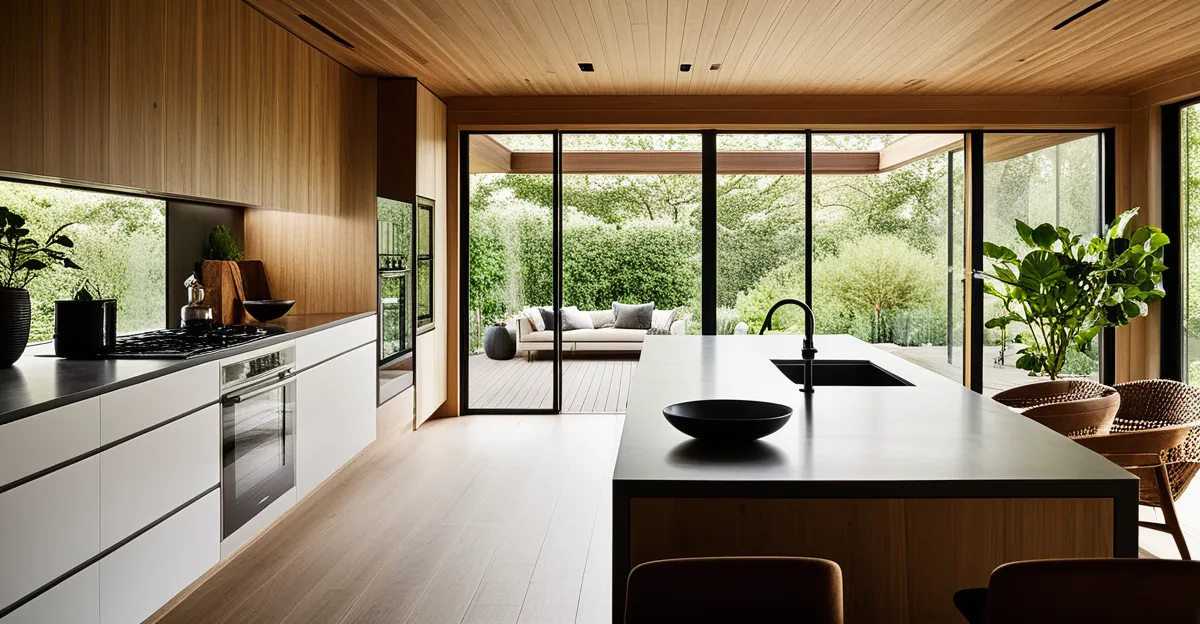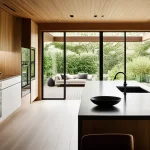Key Benefits of Sustainable Design in Home Living
Sustainable home benefits extend beyond environmental impact, directly enhancing daily comfort and health. Eco-friendly living reduces indoor pollutants by using non-toxic materials, which contributes to improved well-being. People living in sustainably designed homes often experience better air quality, natural light, and ventilation, all positively affecting mental and physical health.
Energy and resource efficiency bring significant cost savings. Sustainable design advantages include reduced utility bills thanks to efficient insulation, energy-saving appliances, and water conservation techniques. Over time, these savings offset initial investments and make sustainable homes more affordable to maintain.
In parallel : How can UK homes maximize natural light for better living?
Long-term environmental benefits are another key reason to embrace sustainable home benefits. Eco-friendly living practices lower carbon footprints, conserve natural resources, and reduce waste. Communities benefit from decreased pollution and healthier ecosystems, reinforcing the crucial role individual homes play in broader environmental health. Designing with sustainability in mind integrates comfort, economy, and environmental stewardship, making it a compelling choice for modern living.
Core Principles of Sustainable Home Design
Sustainable design principles focus on creating homes that nurture both people and planet. A key sustainable design principle is the use of renewable and non-toxic materials. Selecting resources like bamboo flooring or low-VOC paints reduces harmful chemical exposure, supporting improved well-being for occupants. These materials also lessen environmental impact, aligning with eco-conscious home guidelines.
Also read : How Can You Transform Your Home into a Cozy British Haven?
Prioritising resource efficiency is another cornerstone. Efficient water systems, proper insulation, and waste minimisation efforts help maintain a home’s sustainability over its lifespan. For example, well-insulated walls reduce heating and cooling demands, lowering energy consumption and costs.
Enhancing natural light and ventilation not only cuts energy use but also benefits mental and physical health. Thoughtful design introduces daylight, reducing dependence on artificial lighting, while improving airflow controls humidity and indoor air quality. This balanced environment fosters comfort and promotes a healthy home environment, making sustainable design advantages tangible every day.
Together, these core principles build a foundation for green living that improves well-being, resource use, and sustainability. Embracing them ensures homes are both eco-friendly living spaces and comfortable sanctuaries.
Transformative Home Changes for Sustainability
Transforming your home through sustainable home upgrades can significantly boost eco-friendly living by focusing on energy efficiency and material choices. One of the most effective sustainable design advantages includes adopting energy-efficient appliances and lighting. These not only reduce electricity consumption but also lower utility bills, enhancing long-term cost savings.
Improving insulation and selecting high-performance windows are crucial energy efficiency improvements. Enhanced insulation minimizes heat loss in winter and keeps interiors cool in summer, reducing reliance on heating and cooling systems. Well-chosen windows can harness natural light, improving comfort while saving energy.
Incorporating eco-friendly materials such as sustainable flooring and non-toxic finishes further supports green living foundations. Materials like bamboo or recycled wood combine durability with low environmental impact. Sustainable furnishings also contribute to a healthier indoor environment by reducing pollutants.
These upgrades collectively reflect a strategic approach to sustainable home benefits, combining environmental responsibility with improved well-being and financial efficiency. Making thoughtful improvements encourages a healthier, more comfortable home while supporting broader environmental goals.
Key Benefits of Sustainable Design in Home Living
Sustainable home benefits offer immediate improvements in daily comfort and health. Eco-friendly living minimises indoor pollutants by using non-toxic materials and promotes better air quality. This supports improved well-being, reducing respiratory issues and enhancing mental clarity. Natural light and ventilation, key sustainable design advantages, create a more pleasant and healthier atmosphere, supporting both physical and emotional health.
Cost savings are another strong driver of sustainable homes. Energy and resource efficiency reduce utility expenses through effective insulation, energy-saving appliances, and water conservation techniques. These savings not only lower monthly bills but also build long-term financial resilience by decreasing dependence on fluctuating energy prices. Sustainable homes thus combine economic sense with environmental responsibility.
Long-term environmental benefits extend beyond individual dwellings. Sustainable home benefits reduce carbon emissions and conserve natural resources, contributing to cleaner communities and healthier ecosystems. Eco-friendly living encourages collective action towards climate goals, making each home a small but impactful part of global environmental stewardship. These combined advantages reveal why sustainable design is both practical and vital for modern living.
Key Benefits of Sustainable Design in Home Living
Sustainable home benefits offer more than just environmental goodwill—they transform everyday life with concrete advantages. The immediate impact on daily comfort and health is significant, largely because eco-friendly living reduces exposure to indoor toxins. Using non-toxic paints, materials, and finishes limits allergens and volatile organic compounds (VOCs), contributing to improved well-being. Homes designed with natural light and effective ventilation improve mood, sleep, and respiratory health, key aspects of sustainable design advantages.
Another top benefit is the notable cost savings through energy and resource efficiency. Efficient insulation, energy-saving appliances, and water-conserving fixtures cut monthly utility bills. This reduces households’ dependency on fluctuating energy markets and offers financial stability. Such savings are central to sustainable home benefits, making ecological choices both practical and economical.
Finally, sustainable design supports long-term environmental benefits for communities. By reducing household carbon footprints, sustainable homes help decrease pollution and strain on natural resources. This collective impact fosters healthier ecosystems and communities, emphasizing that sustainable design advantages go beyond individual homes to support broader environmental resilience.
Key Benefits of Sustainable Design in Home Living
Sustainable home benefits profoundly improve both daily comfort and health. By embracing eco-friendly living, homes reduce exposure to indoor pollutants, which leads to measurable improved well-being. Non-toxic materials and effective ventilation create fresher air, lowering irritants that trigger allergies or respiratory issues. Natural light introduced through smart design also boosts mood and mental clarity.
Cost savings represent another key sustainable design advantage. Energy and resource efficiency measures, such as enhanced insulation and energy-saving appliances, significantly cut construction and monthly utility expenses. These reductions make sustainable homes financially sensible while supporting environmental responsibility.
Long-term environmental benefits extend beyond individual households, impacting entire communities. Sustainable homes help decrease carbon emissions and resource depletion, fostering cleaner air and water for all. This collective effect underscores how adopting sustainable home benefits contributes to healthier ecosystems while sustaining future generations.
Through its combined effects on health, finances, and the environment, sustainable design advantages present a comprehensive path toward more comfortable, affordable, and eco-friendly living spaces.




